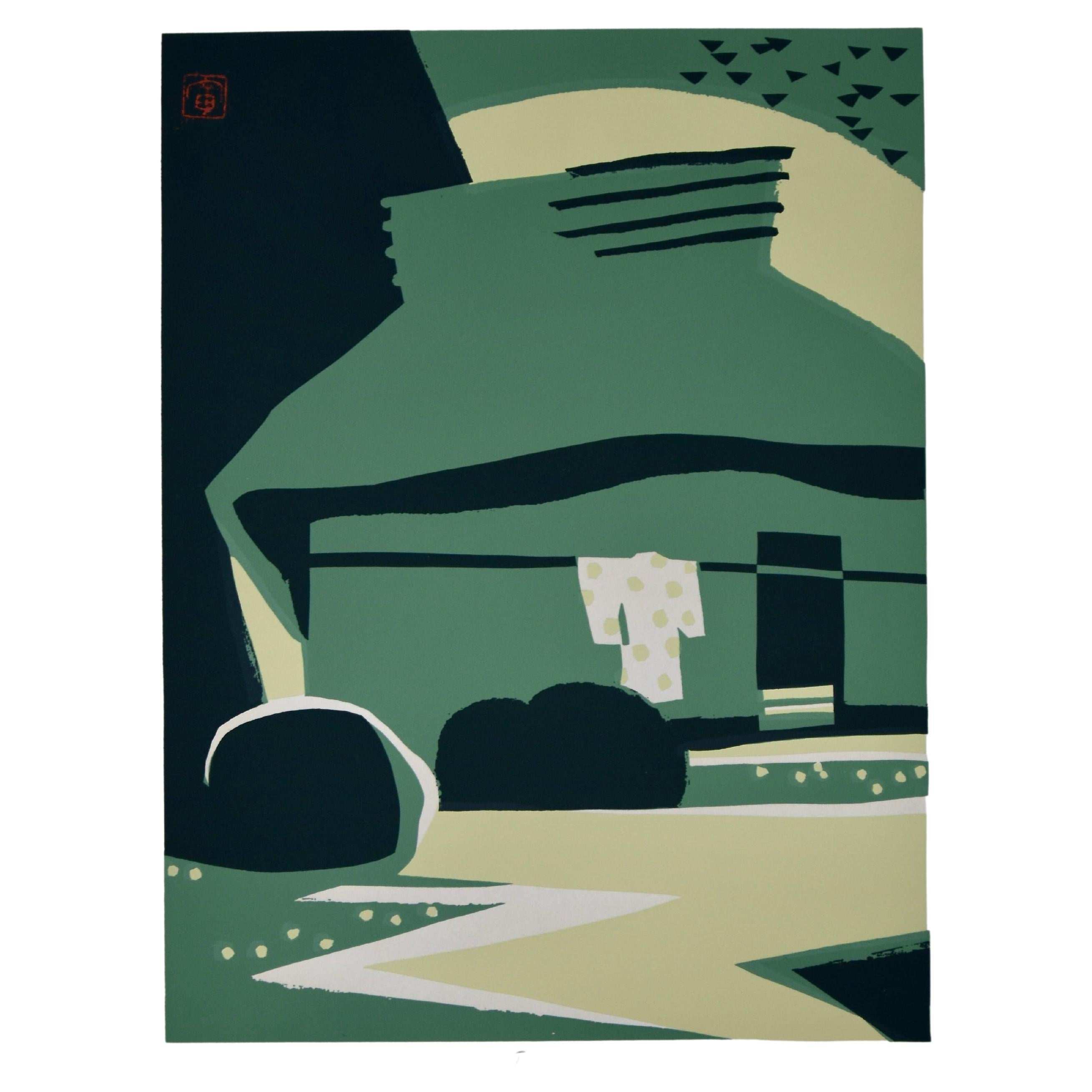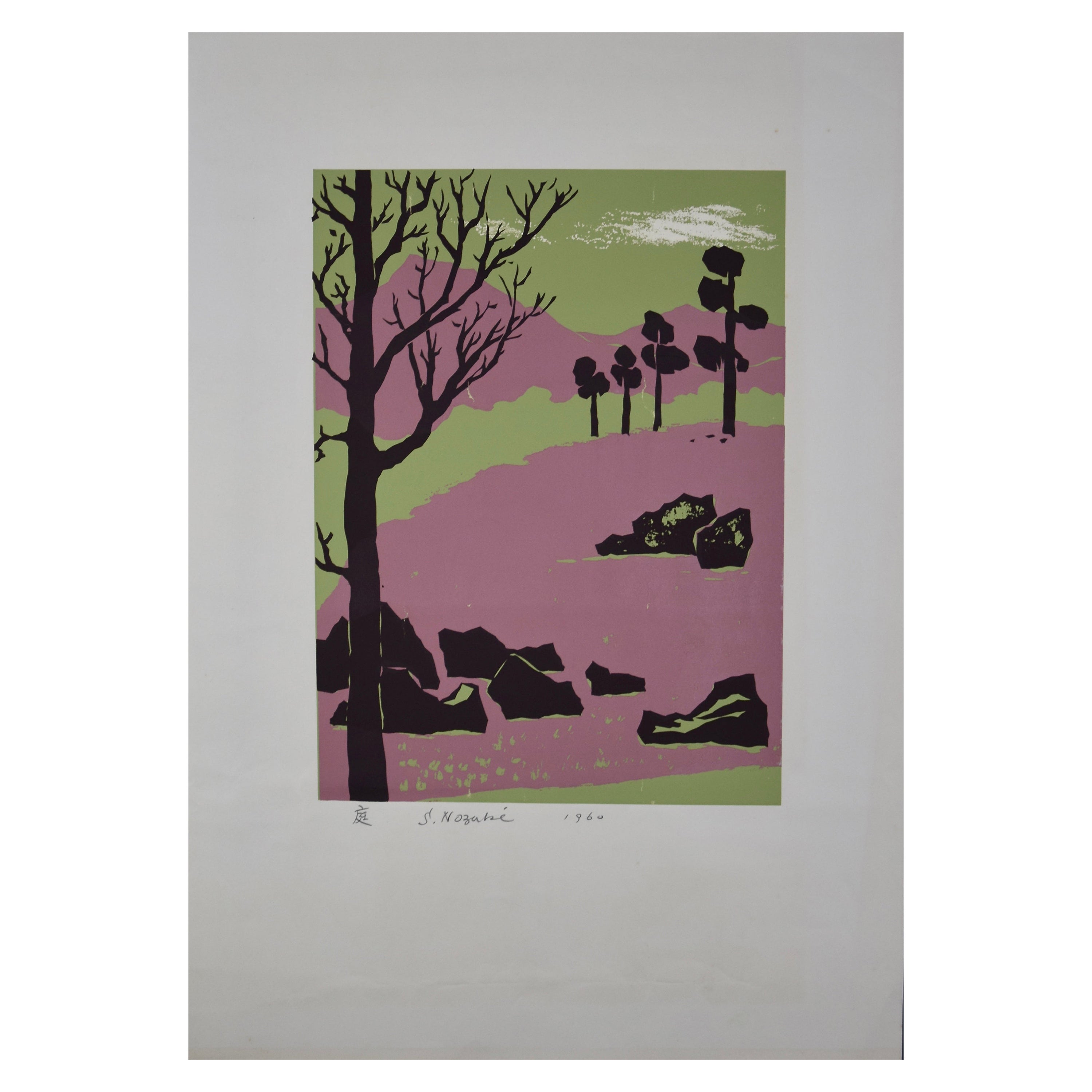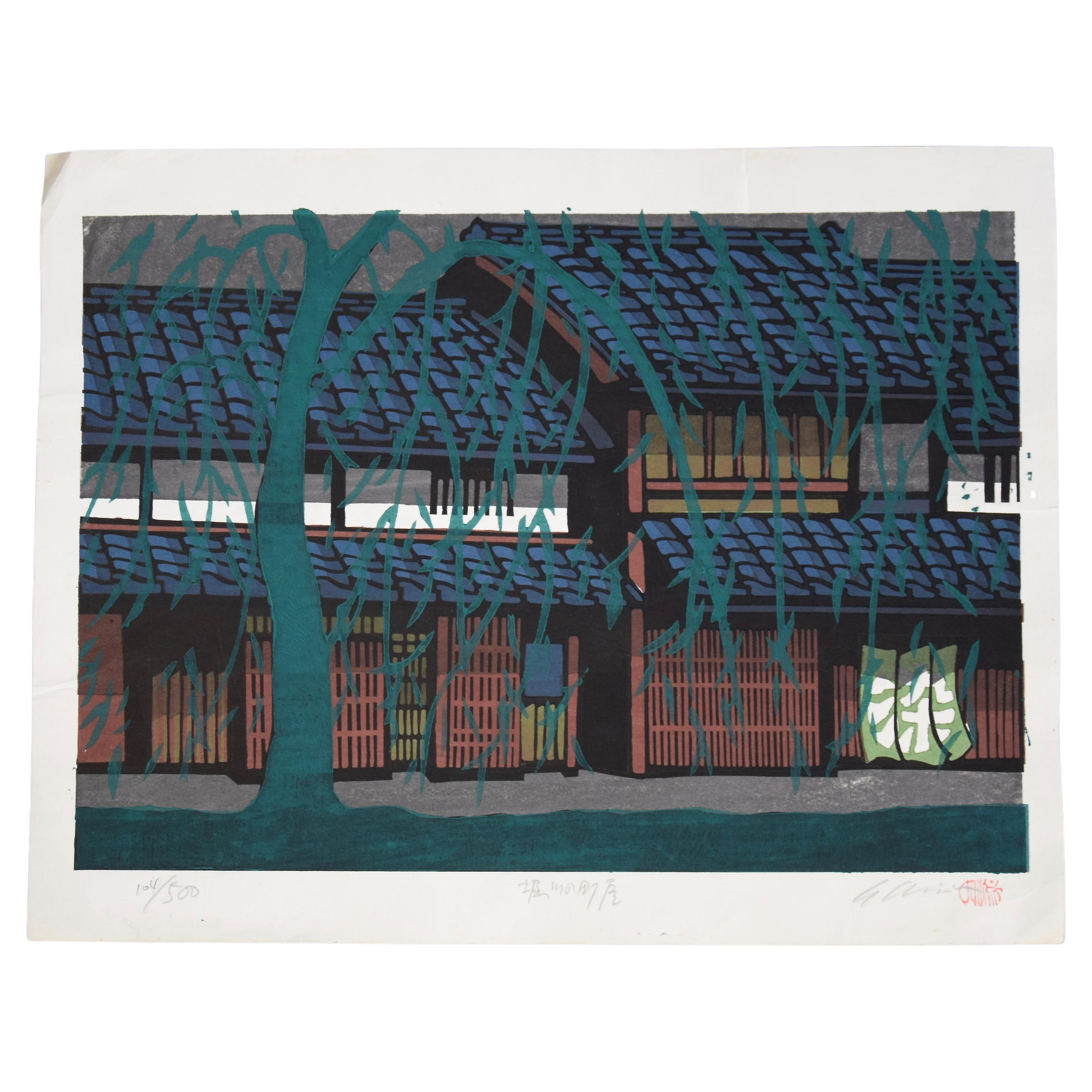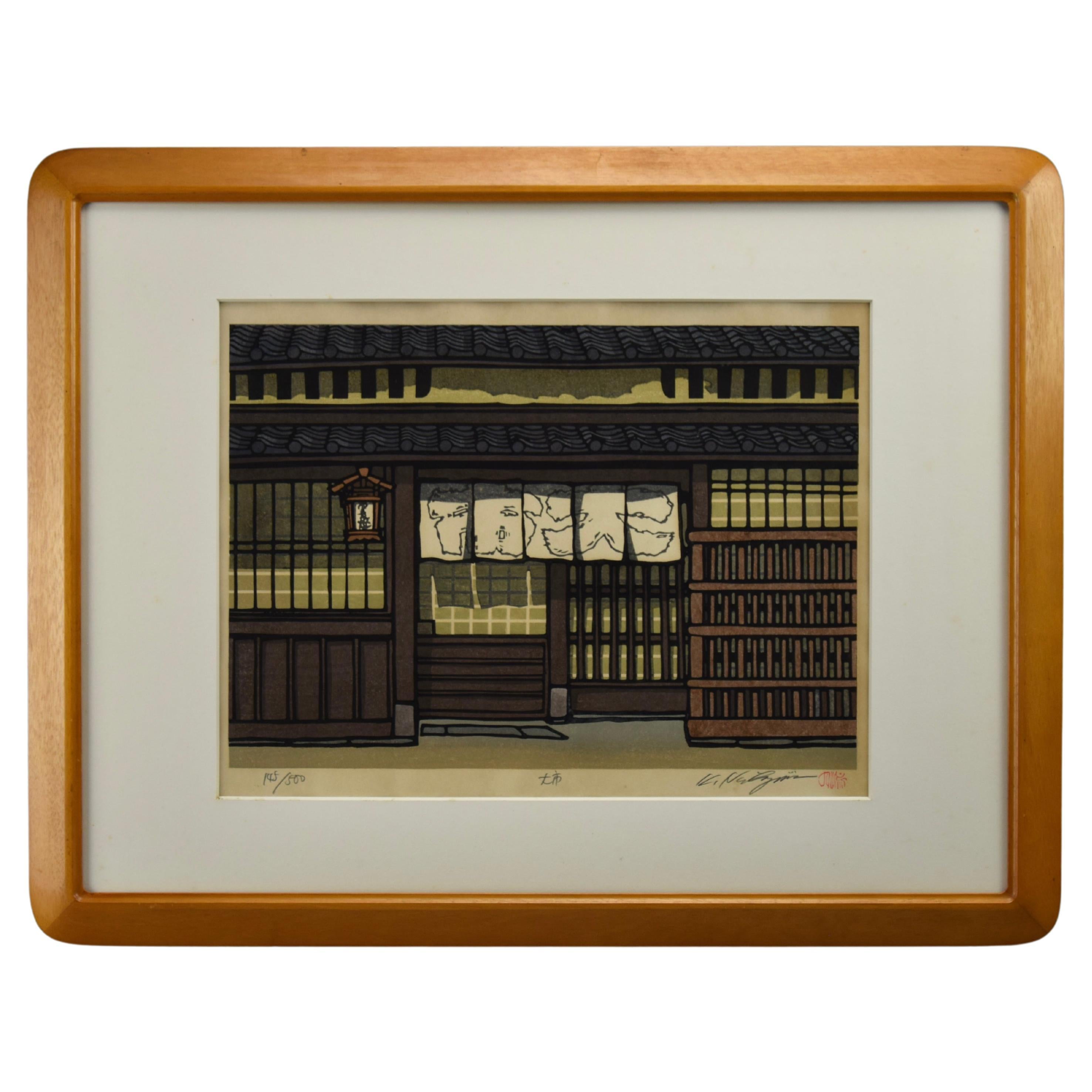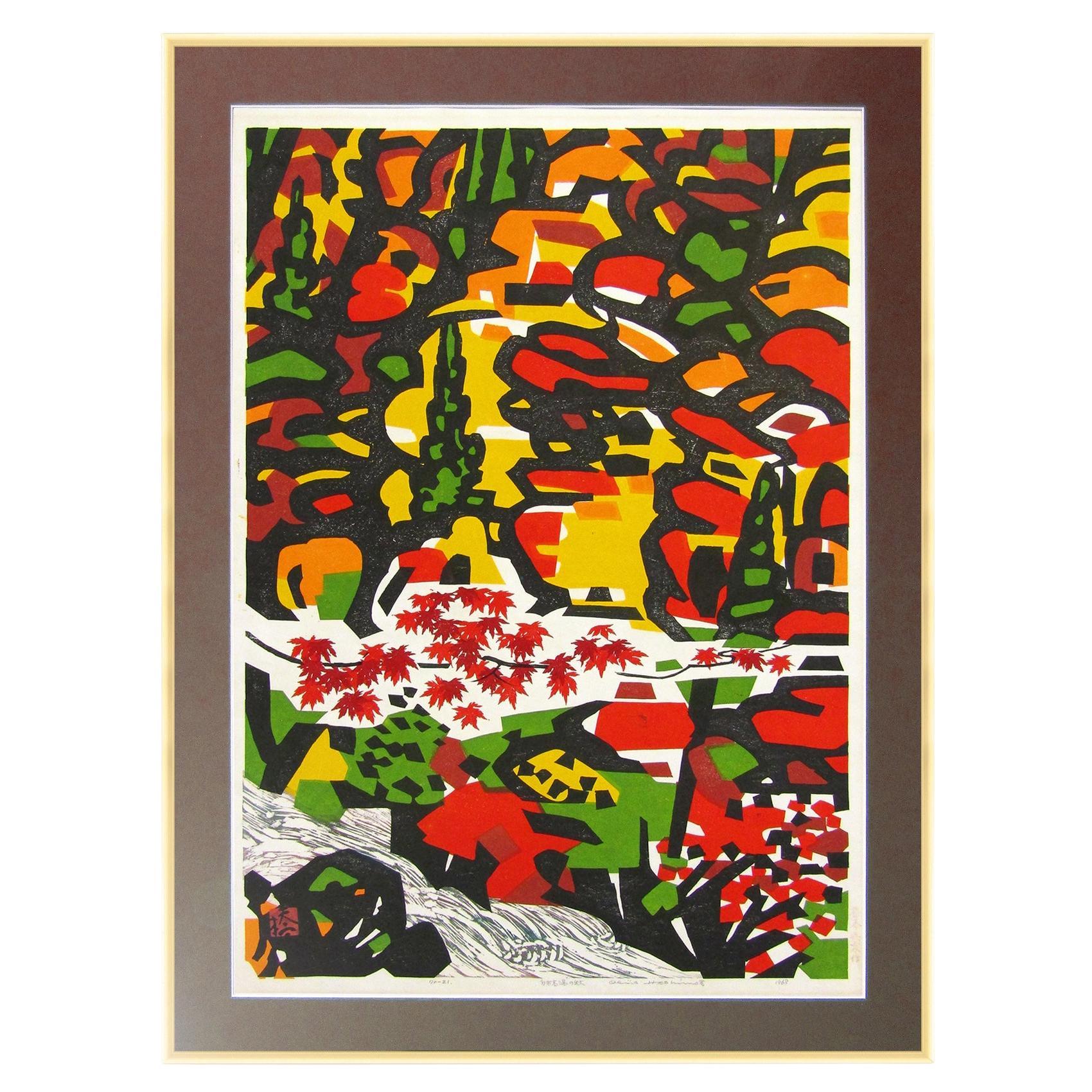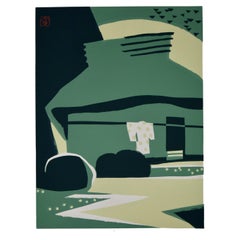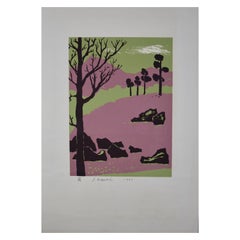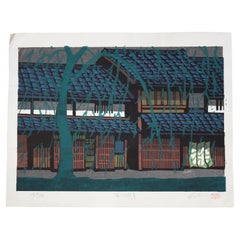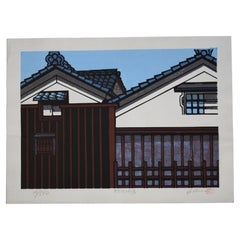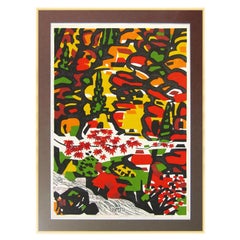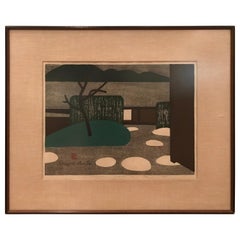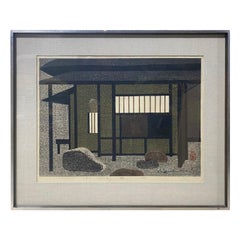Items Similar to Blooming Fields by Masayasu Uchida
Want more images or videos?
Request additional images or videos from the seller
1 of 8
Blooming Fields by Masayasu Uchida
$1,126.48
£846.60
€950
CA$1,577.58
A$1,730.12
CHF 896.08
MX$20,788.75
NOK 11,283.79
SEK 10,590.16
DKK 7,239.33
About the Item
Discover the serene beauty and vibrant colors of rural Japan with “Blooming Fields,” an exquisite lithograph by the renowned Japanese artist Masayasu Uchida. Numbered 133 out of a limited edition of 175, this piece is a collector’s gem, offering both aesthetic delight and investment value.
Uchida’s “Blooming Fields” masterfully captures the tranquil essence of a traditional Japanese landscape. The artwork depicts a charming thatched-roof farmhouse nestled amidst lush greenery, with fields blooming in the foreground. The vivid greens and deep blues are juxtaposed with the delicate blush of blooming trees, creating a harmonious and peaceful scene that invites the viewer into a world of pastoral beauty.
Masayasu Uchida (1920 Yokosuka) is celebrated for his ability to blend traditional Japanese art forms with contemporary techniques. His works are distinguished by their vibrant color palettes, meticulous attention to detail, and a profound sense of tranquility. This lithograph exemplifies Uchida’s talent for capturing the timeless beauty of the Japanese countryside, making it a perfect addition to any art collection.
Framed and ready to adorn your home, “Blooming Fields” brings a touch of Japanese elegance and serenity to your space. It’s not just a piece of art; it’s a window into the serene landscapes that have inspired artists for centuries. Own a piece of Japanese heritage and let the tranquil charm of “Blooming Fields” transform your environment.
Embrace the opportunity to own this limited-edition masterpiece by Masayasu Uchida. “Blooming Fields” is more than just an artwork; it’s a testament to the enduring beauty of nature and the skilled craftsmanship of a celebrated artist. Make it yours today and let the serene beauty of the Japanese countryside bloom in your home.
Colors may slightly vary due to photographic lighting sources or your monitor settings.
Measurements : H.76 x W.62 x D.2 cm - H.29.92 x W.24.41 x D.0.79 inches
The Art work will be shipped insured overseas in a custom made wooden case. Cost of transport to the US, Euro 225, is case included.
Masayasu Uchida: A Celebrated Japanese Artist
Masayasu Uchida, born in 1922 in the serene town of Yokosuka, nestled within Kanagawa Prefecture, Japan, is a revered name in the world of art. Uchida's life and work are a testament to the timeless beauty and depth of Japanese culture, as well as the profound influence of nature on human creativity.
Early Life and Education
Yokosuka, a town known for its rich history and picturesque landscapes, played a significant role in shaping Uchida's artistic sensibilities. Growing up amidst the natural beauty of Kanagawa Prefecture, he developed a deep appreciation for the environment that would later become a central theme in his artwork. Uchida pursued his education in art with a relentless passion, immersing himself in the traditional techniques and philosophies that have defined Japanese art for centuries.
Artistic Journey
Uchida's artistic journey is marked by a dedication to exploring the harmony between human life and nature. His works often depict tranquil rural landscapes, serene water bodies, and the changing seasons, all rendered with a meticulous attention to detail and a keen sense of composition. Uchida's ability to capture the subtleties of light, shadow, and texture in his artwork has earned him acclaim both in Japan and internationally.
Significant Contributions
Throughout his career, Masayasu Uchida has made significant contributions to the field of printmaking, particularly in the realm of lithography. His works are characterized by their vibrant colors, delicate lines, and an almost meditative quality that invites viewers to pause and reflect. Uchida's lithographs often feature idyllic scenes of Japanese countryside, traditional architecture, and flora, each piece imbued with a sense of peace and introspection.
Legacy and Influence
Masayasu Uchida's legacy extends beyond his own body of work. As a dedicated teacher and mentor, he has influenced a generation of artists who have been inspired by his techniques and philosophy. Uchida's commitment to preserving and promoting traditional Japanese art forms while also embracing modern influences has ensured that his work remains relevant and celebrated in contemporary art circles.
Exhibitions and Recognition
Over the decades, Uchida's artwork has been showcased in numerous exhibitions, both within Japan and abroad. His pieces have been featured in prestigious galleries and museums, earning him accolades and honors for his contribution to the arts. Uchida's work continues to be sought after by collectors and art enthusiasts who appreciate the serenity and beauty that his art brings into their lives.
Personal Life
Despite his acclaim, Masayasu Uchida remains deeply connected to his roots in Yokosuka. He often draws inspiration from the landscapes and traditions of Kanagawa Prefecture, finding in them a wellspring of creativity that continues to nourish his artistic soul. Uchida's life and work stand as a testament to the enduring power of nature, tradition, and the human spirit.
Masayasu Uchida's biography is a reflection of his profound impact on the world of art, his dedication to his craft, and his enduring connection to the natural beauty of Japan. His work remains a source of inspiration and tranquility, capturing the essence of Japanese culture and the timeless beauty of the world around us.
- Dimensions:Height: 29.93 in (76 cm)Width: 24.41 in (62 cm)Depth: 0.79 in (2 cm)
- Style:Mid-Century Modern (Of the Period)
- Materials and Techniques:
- Place of Origin:
- Period:
- Date of Manufacture:1960
- Condition:Wear consistent with age and use.
- Seller Location:Weesp, NL
- Reference Number:1stDibs: LU1464240143052
About the Seller
5.0
Platinum Seller
Premium sellers with a 4.7+ rating and 24-hour response times
Established in 1996
1stDibs seller since 2015
377 sales on 1stDibs
Typical response time: <1 hour
- ShippingRetrieving quote...Shipping from: Weesp, Netherlands
- Return Policy
Authenticity Guarantee
In the unlikely event there’s an issue with an item’s authenticity, contact us within 1 year for a full refund. DetailsMoney-Back Guarantee
If your item is not as described, is damaged in transit, or does not arrive, contact us within 7 days for a full refund. Details24-Hour Cancellation
You have a 24-hour grace period in which to reconsider your purchase, with no questions asked.Vetted Professional Sellers
Our world-class sellers must adhere to strict standards for service and quality, maintaining the integrity of our listings.Price-Match Guarantee
If you find that a seller listed the same item for a lower price elsewhere, we’ll match it.Trusted Global Delivery
Our best-in-class carrier network provides specialized shipping options worldwide, including custom delivery.More From This Seller
View AllJapanese Mid-Century Modern Woodblock Print by Tomizaburo Hasegawa
Located in Weesp, NL
1960's Japanese woodblock print titled " In front of the garden" by Japanese asian and modern & contemporary artist Tomizaburo Hasegawa.
The Art w...
Category
Vintage 1960s Japanese Mid-Century Modern Prints
Materials
Paper
Japanese Mid-Century Modern Woodblock Print by S. Nozaki
Located in Weesp, NL
1960's Japanese woodblock print titled "the Garden" by Japanese asian and modern & contemporary artist Shijiro Nozaku born in 1923.
The At work is signed and titled in pencil by the...
Category
Vintage 1960s Japanese Mid-Century Modern Prints
Materials
Paint, Paper
Japanese Woodblock on Paper Print by Katsuyuki Nishijima
Located in Weesp, NL
Beautiful Japanese woodblock print by Katsuyuki Nishijima born in Kyoto in 1945.
Signed, titled and numbered by the artist in pencil.
Nishijima ha...
Category
Late 20th Century Japanese Mid-Century Modern Prints
Materials
Paper
Japanese Woodblock on Paper Print by Katsuyuki Nishijima
Located in Weesp, NL
"Machiya in Marutamachi" Traditional Japanese wooden townhouse that functioned both a residence and busines.
Beautiful Japanese woodblock print by Katsuyuki Nishijima...
Category
Vintage 1970s Japanese Mid-Century Modern Prints
Materials
Paper
Traditional Japanese Woodblock Print by Nishijima Katsuyuki
Located in Weesp, NL
Nishijima Katsuyuki (西島 勝之) is a contemporary Japanese artist known for his woodblock prints, which often depict traditional Japanese architecture and landscapes. Born in 1945 in Yamaguchi Prefecture, Japan, Nishijima studied at the Kyoto Prefecture Art School and began his career as a painter before transitioning to woodblock printing. His works are celebrated for their detailed and vibrant representation of the Japanese countryside and urban scenes.
Nishijima's prints are recognized for their use of bold colors and intricate details. He employs traditional woodblock printing techniques, which involve carving the image into woodblocks, inking the blocks, and then pressing them onto paper. Each color in the print requires a separate block and precise alignment, or registration, to create the final image.
The print's title is "Bunraku" and is one of Nishijima's works that showcase traditional Japanese buildings and scenes. The print features a detailed depiction of a traditional Japanese storefront with a noren...
Category
1990s Japanese Mid-Century Modern Prints
Materials
Paper
Winter Morning by Taku Harada 1960
Located in Weesp, NL
Experience the Serenity of Shirakawa-go in "Winter Morning" by Taku Harada
Immerse yourself in the tranquil beauty of Shirakawa-go with this exquisite Jap...
Category
Vintage 1960s Japanese Mid-Century Modern Prints
Materials
Paper
You May Also Like
Large Hand-Signed 1968 Japanese Woodblock Print by Okiie Hashimoto
By Okiie Hashimoto
Located in Shepperton, Surrey
A large, abstract woodblock print by Japanese artist Okiie Hashimoto (橋本興家).
On strong wove paper, the colours are rich and unfaded. It is hand-signed in pencil, dated 1968 and num...
Category
Mid-20th Century Japanese Mid-Century Modern Prints
Materials
Paper
Okiie Hashimoto "Garden, Ginkakuji" Abstract Woodcut
By Okiie Hashimoto
Located in Skokie, IL
Okiie Hashimoto "Garden, Ginkakuji" Abstract Woodcut
This is a striking framed abstract woodcut print by renowned Japanese printmaker Okiie Hashimoto (1899-1993). Hashimoto was best...
Category
Vintage 1950s Japanese Other Decorative Art
Materials
Paint, Paper, Parchment Paper, Glass, Wood
$2,200 Sale Price
20% Off
Kiyoshi Saito Katsura Kyoto Lithograph
By Kiyoshi Saitō
Located in Winnetka, IL
This lithograph is numbered 142/150 from 1955 and titled Katsura Kyoto (6)
It has a very modern look and is in original midcentury frame.
Category
Vintage 1950s Japanese Prints
Materials
Paper
Kiyoshi Saito Signed Limited Edition Japanese Woodblock Print Tea House, 1965
By Kiyoshi Saitō
Located in Studio City, CA
A beautifully designed and composed woodblock print by famed Japanese printmaker Kiyoshi Saito. Many consider Saito to be one of the most important, if not the most important, contem...
Category
Vintage 1960s Japanese Showa Prints
Materials
Glass, Wood, Paper
Kiyoshi Saito Signed Limited Edition Japanese Woodblock Print Daitoku-Ji Kyoto D
By Kiyoshi Saitō
Located in Studio City, CA
A beautifully composed woodblock print by famed Japanese printmaker Kiyoshi Saito. Many consider Saito to be one of the most important, if not the most important, contemporary Japanese printmakers of the 20th century. This print, which is titled "Daitoku-ji Kyoto (D)" is from a series of Kyoto temple images that Saito created. The woodblock print features strong, contrasting colors, beautiful wood grain, and a complex design - the cross-shaped walkway pattern which is highlighted by the small precisely placed stones is repeated on the temple wall. The wood grain in the yard, temple walls and sky add another layer of compositional depth.
The print is signed in black ink and stamped/sealed in red within the image It is likely titled, dated (1960), and numbered (from a limited edition of 150) in pencil by the artist in the lower margin but hidden below the mat. Saito's "self-carved, self printed Kiyoshi Saito" personal label with his red chop seal...
Category
Vintage 1960s Japanese Showa Prints
Materials
Paper
Kenji Yoshida "Oribe" Woodblock Print, 3/30 Signed, 1968
By Kenji Yoshida
Located in Miami, FL
Kenji Yoshida "Oribe" woodblock print, 3/30 Signed, 1968
Offered for sale is an early woodblock print by artist Kenji Yoshida (1924-2009), signed and dated 1968 and numbered 3/30 ...
Category
Mid-20th Century French Prints
Materials
Wire
